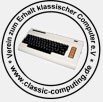Hi,
yesterday I've got extremely lucky. My friend/associate and I in the CMH/UNI-HB went through some old boxes in a basement storage and found this:
I think the most interesting part is an Allen Communication / Alpine Computing videodisc controller card and an AD converter card:
The box was apparently the property of Philips Forschungslabor, as it is also stated on the drive:
I know that for a period of time Philips Research was somehow a part of the Info Campus and they have been working on the LISA (Light Switching Array) technology.
At least this is story told to my associate by Carl-Friedrich von Ahlften who was a lead developer of the PM-4400 in 1978.
Among other things, the computer contained a Z80 card and a mouse interface as well:
I've quickly recapped the powesupply, cleaned the drives internals, and now I have a functional basic setup:
Does any of you have experience with or thoughts on the expansion cards we have just uncovered? I would be very interested to fire them up.
cheers,
nils

